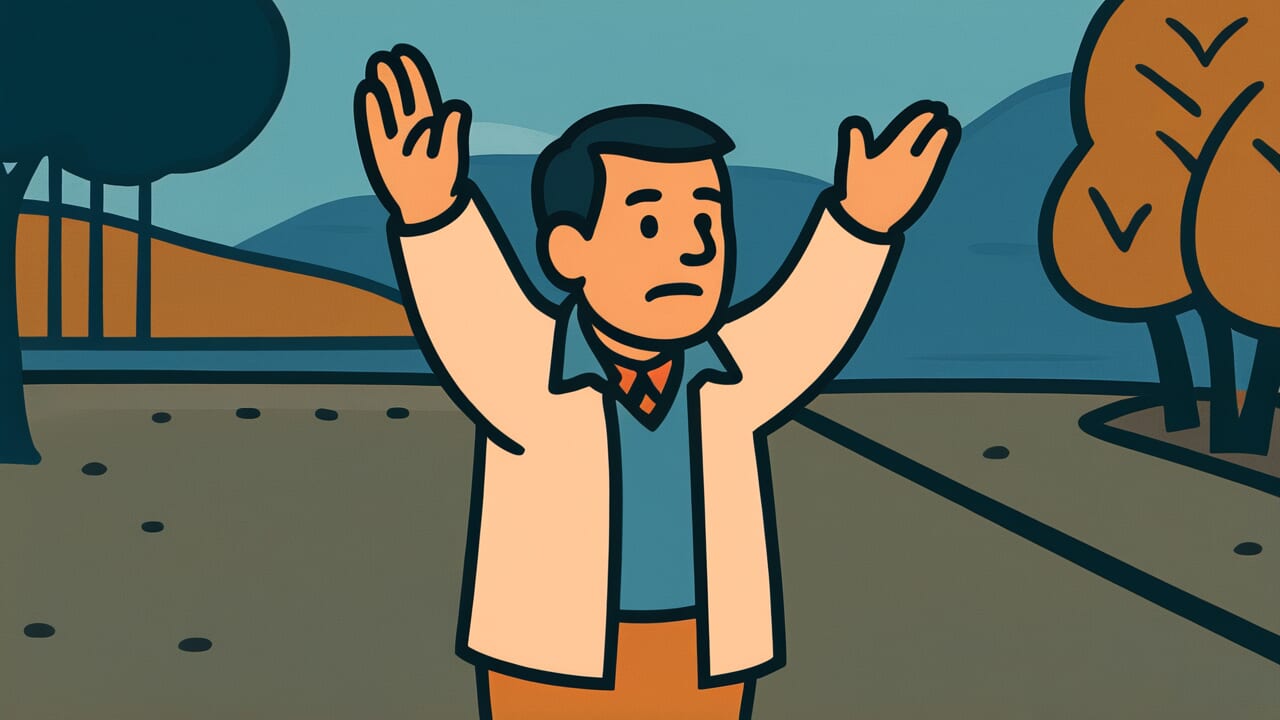How to Read “Know the distant but not know the near”
Tōki wo shirite chikaki wo shirazu
Meaning of “Know the distant but not know the near”
This proverb points out a bias in human perception. People can understand distant future matters or other people’s problems clearly. Yet they cannot see problems close to them or understand themselves well.
You can give perfect advice on someone else’s love life. But you become blind when it comes to your own romance. You can discuss your company’s future strategy eloquently. Yet you cannot figure out today’s work priorities.
This expression shows how being directly involved prevents objective judgment. The more distance we have from something, the more calmly we can view it. Things too close become hard to see.
People still use this saying today. It warns those who criticize others while ignoring their own faults. It also cautions people who get caught up in immediate tasks and lose sight of what truly matters.
Origin and Etymology
The exact source of this proverb remains unclear. However, its structure suggests influence from classical Chinese thought. The contrast between “distant” and “near” is a common pattern in Eastern philosophy.
This expression highlights an interesting contradiction in human perception. It contrasts “distant” and “near” things, including both physical and psychological distance.
We can analyze distant future matters or other people’s problems objectively. This makes them easier to understand. But we cannot view our own matters or immediate problems calmly. Being directly involved clouds our judgment.
Similar expressions appear in Edo period moral instruction books. This suggests the saying has been used in Japan for quite some time.
People back then also noticed universal human tendencies. They saw how we easily spot others’ faults but miss our own. They observed how we can plan for the distant future yet overlook today’s tasks.
This proverb was born from such human observation. It has been passed down as wisdom through generations.
Usage Examples
- He speaks in detail about world affairs, but “know the distant but not know the near” perfectly describes how he completely misses his own family’s feelings
- As a management consultant, he can identify other companies’ problems, but “know the distant but not know the near” applies to his blindness toward his own company’s issues
Universal Wisdom
This proverb reveals a fundamental paradox in human perception. We see things more clearly when we have distance from them. Things too close become invisible. Why does this contradiction exist?
The answer lies in the weight of being directly involved. Matters concerning us carry emotions, interests, and pride. These factors interfere with objective viewing.
We try to see objectively, but unconsciously interpret things favorably. Meanwhile, we can analyze other people’s matters or distant futures calmly. These carry no emotional burden.
It is like standing on a mountain peak. You can see distant scenery clearly. But you cannot see the small stones at your feet.
This human trait makes sense as a survival strategy. Constantly being aware of our faults and problems would destroy our confidence. We would become unable to act.
Some cognitive distortion serves as self-defense. It may be necessary for mental health. However, when this tendency goes too far, we lose growth opportunities. We lose sight of precious things.
Our ancestors left this proverb to teach an important lesson. We must be aware of this human nature. Sometimes we need to consciously try to view ourselves objectively.
When AI Hears This
The human brain switches information processing modes based on distance from the target. For distant targets, it extracts only the essence. For near targets, it processes every detail. This is the psychological distance effect revealed by cognitive science.
For example, someone else’s life planning seems simple: “Just do what you want.” But your own career choice becomes complicated. You worry about parental expectations, financial anxiety, and friendships.
The brain automatically cuts noise when viewing distant targets. It extracts only core information. Understanding distant things easily does not mean true understanding. The brain simply simplifies automatically.
For near targets, the brain runs at full capacity. The closer the problem, the more factors seem relevant. Too much information makes the big picture invisible.
Research shows interesting results. People estimate work plans for locations 100 meters away more optimistically than plans for 1 meter away. They think distant tasks will finish faster.
This proverb points out not a lack of knowledge but a structural feature of our cognitive system. Understanding near things requires intentional effort. We must step back and adopt the abstract perspective we use for distant things.
Lessons for Today
This proverb teaches modern people the importance of viewing themselves objectively. On social media, you can harshly judge others’ lifestyles. Yet you cannot change your own habits.
You give perfect advice to friends about their problems. But you procrastinate on your own issues. Everyone has experienced this, right?
The key is knowing this human trait and consciously changing perspectives. Try writing your worries on paper. Then ask yourself: “If a friend came to me with this, what would I say?”
Imagine how your future self will judge today’s choice. “What will I think about this decision in five years?” Such small techniques can reveal what was too close to see.
You do not need perfect objectivity. Just occasionally take time to step back and observe yourself. That alone can help you see what truly matters.
You have been looking at distant things for so long. Why not turn your eyes to what is right at your feet?



Comments